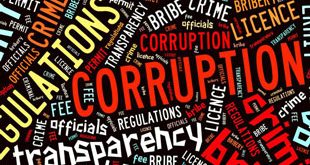
By Silver Kayondo
Half of the world’s ten worst-performing currencies this year are from Africa
In August, the Bank of Uganda raised the Central Bank Rate (CBR) to 16%. The increase is aimed at helping keep core inflation below 10% and allow it to slow toward the target of 5% in the medium term. Central banks in South Africa, Ghana, Angola, Kenya and Uganda have tightened monetary policy to rein in inflation as plunging commodity prices put pressure on domestic currencies. Nigeria, Africa’s biggest oil producer, saw its foreign-exchange holdings dip by 20% and its Naira drop by 18% against the dollar since September. It resorted to trading restrictions and restrictions on banks against taking dollar deposits only to cause a dollar shortage and fuel speculative activity in the market.
Ghana is battling to jumpstart economic growth because of surging inflation, the highest borrowing costs in Africa and a currency that has oscillated from the best to the worst performer on the continent this year. The economy is predicted to expand by a paltry 3.5% this year, the slowest pace in two decades. Inflation jumped to a five-year high of 17.9% in July from 17.1% in June. The government has made tough and unpopular choices like ending fuel subsidies.
Angola burned through 10% of its foreign-currency stockpile this year and raised interest rates. Only Botswana, Africa’s and the world’s largest diamond producer seems to hold the magic. The Bank of Botswana lowered its main lending rate by 50 basis points to 6 % this month. It is the second time it is cutting its benchmark rate this year. But even this comes at a time when growth is slumping. The economy expanded by 4.6% in the year through March, compared with 7.9% in the previous year. Consumer prices rose by 3.1% in June from a year ago.
The continental questions ought to be, where has Africa gone wrong? Are our economies viable and sustainable models? Did we celebrate resilience over the global financial crisis too early? The history of emerging markets is associated with bubbles and booms. Was “Africa rising” a bubble that is bursting? A few years ago, the BRICs — Brazil, Russia, India and China — were celebrated as engines and turbines of global growth. Presently, Brazil and Russia face deep recessions brought on by the collapse in global commodity prices, while China is limping and struggling to nurse its fast-sinking stock market.
To compound the economic uncertainty that lies ahead of us, African nations have an average $5.8 billion in their foreign-exchange reserves. This is just 7% of the $78 billion average across 31 global developing countries, even after stripping out China’s $3.7 trillion of holdings; the world’s largest according to data compiled by Bloomberg. With foreign-exchange buffer reserves of less than a tenth of the emerging-market average, sub-Sahara African nations increasingly find it difficult to stop their currencies from plummeting amid a decline in commodities, China’s devaluation, and the prospect of higher interest rates in the U.S making it more expensive to access credit. Half of the world’s ten worst-performing currencies this year are from Africa, even though Central Banks are emptying their reserves in market interventions faster than any other region.
This presents business and regulatory challenges across the continent, from spiraling inflation in Angola to dollar shortages that are crippling business in Nigeria-hurting trade and investment. As reserves decline and exports cripple, sub-Saharan Africa will push its current-account deficit to the widest of any region negativing foreign investment and trade. As a weaker exchange rate makes imports more expensive, the balance of payment situation is being worsened by the plunge in the market prices of oil and precious metals for nations that rely on natural resources for foreign exchange. Lack of value addition, poor economic diversification and the widening gap between exports and imports makes it very hard to replenish our economic buffer zones and stimulate currency and economic recovery. In here lies Africa’s biggest economic malaise.
****
The writer is a Master of Laws (International Banking & Finance) student at the University of Pretoria, South Africa
 The Independent Uganda: You get the Truth we Pay the Price
The Independent Uganda: You get the Truth we Pay the Price


